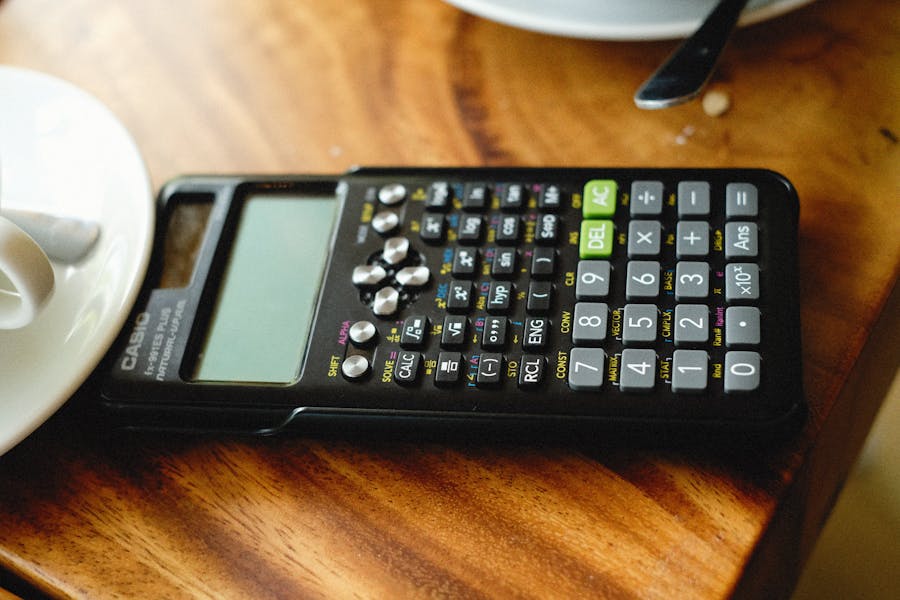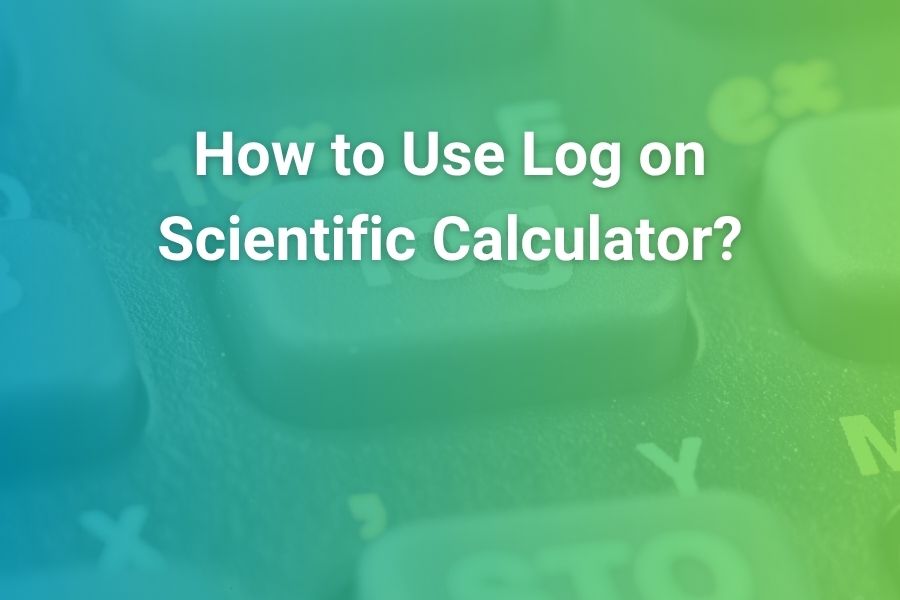
If you’re shopping for a calculator and feel torn between “scientific” and “graphing,” you’re not alone. The short answer is simple: a graphing calculator is not the same as a scientific calculator. A graphing calculator includes everything a scientific calculator can do—trigonometry, exponents, logs, fractions, scientific notation—and then adds graphing, data lists, matrices, statistics, and often programming. A scientific calculator focuses on the core math/science operations without plotting graphs or running apps. The long answer matters, though, because the best choice depends on your course load, budget, and exam rules. This guide breaks it all down and gives you practical recommendations you can act on today.
What Each Calculator Actually Is
Scientific Calculator: Focused Power for Core Math and Science
A scientific calculator gives you the essential toolkit for middle school through early college math and science. Expect straightforward entry of parentheses, powers and roots, trigonometric functions and their inverses, logarithms (base 10 and natural), factorials, permutations and combinations, fraction templates or fraction-to-decimal toggles, and convenient scientific notation. Most modern models include a “natural” or “textbook” display that shows stacked fractions and raised exponents the way they appear on paper. Some handle complex numbers and offer basic statistical summaries such as mean, standard deviation, and simple regressions, but they stop short of full-blown data plotting.
Scientific calculators are typically small, inexpensive, durable, and quick to learn. That makes them perfect for Algebra I and II, Geometry, Chemistry 1, Physics 1, and general-education math courses where speed and clarity matter more than visualization.
Graphing Calculator: Everything Above, Plus Graphs, Data, and Apps
A graphing calculator contains the entire scientific feature set and then layers in a visual, data-centric experience. You can plot multiple functions, trace values, find intersections and zeros, and see transformations. Many models store lists, run regressions (linear, quadratic, exponential, sinusoidal), compute distributions for statistics, and manipulate matrices and vectors. Newer color-screen models display plots and tables side by side, making it easier to compare algebraic expectations with numerical behavior.
Because of those extras, graphing calculators cost more, take a bit longer to master, and are physically larger. But when you hit courses like Algebra 2 with extensive function analysis, Precalculus, Calculus, and Statistics, the time you save and the insight you gain from visualization can be a game changer—assuming your teacher and exam rules allow graphing devices.
The Overlap and the Difference
What They Share
Both types perform the core scientific operations: trig, inverse trig, exponents and logarithms, roots, fraction math, scientific notation entry/display, permutations/combinations, angle conversions (degrees/radians), and basic statistics. If your class only needs those capabilities, either category works.
Where They Diverge
The divergence is visual and structural. Scientific calculators return single-line or multi-line textual results: numbers, exact fractions, symbolic-looking forms such as √ or π when appropriate. Graphing calculators add an entire workspace for plotting and analyzing functions and data. They store more information (lists, matrices), provide more extensive stats menus, and often support custom programs or downloadable apps. In short, a graphing calculator is a superset. The scientific calculator cannot graph; the graphing calculator can do nearly everything a scientific calculator can—and more.
Cost vs. Capability: What You Pay For
Typical 2025 Price Ranges
Scientific calculators commonly cost between about $10 and $40, depending on features and brand, with classroom favorites in the teens to low-thirties. Graphing calculators typically cost between about $90 and $150+, with premium or CAS models higher. That difference isn’t just brand markup; the screen, memory, and software all contribute to price. For many students, especially in early courses, the scientific calculator offers far better value per dollar.
Total Cost of Ownership
A scientific calculator usually runs for years on a coin cell or solar-assist battery. Graphing calculators often use rechargeable batteries and include cables, and while that’s convenient, it adds care requirements. Cases and screen protectors are inexpensive but worth considering for either category—especially if your backpack is a jungle of textbooks and binders.
Which One You Need by Course
Middle School, Pre-Algebra, and Algebra I
You’re learning order of operations, fraction arithmetic, simple exponents, and basic trig ideas. A scientific calculator is perfect: fast, inexpensive, and aligned with the homework. You don’t need graphs yet, and in some classrooms, graphing is restricted anyway to ensure you practice algebraic methods.
Geometry
Most geometry courses emphasize constructions, relationships, and proofs more than heavy calculator work. When calculations do arise—area, trigonometric ratios for right triangles, or unit conversions—a scientific calculator is more than enough. You may switch angle modes between degrees and radians occasionally, but you won’t need a graphing device to succeed.
Algebra II and Function Analysis
Now the decision gets interesting. Many Algebra II classes lean into function behavior: transformations, intercepts, zeros, and asymptotes. A scientific calculator can evaluate expressions numerically, but a graphing calculator visualizes the story. Plotting a quadratic, tracing to the vertex, and comparing linear versus exponential fits are fast on a graphing model. If your teacher demonstrates solutions with a graphing calculator or your syllabus lists plotting as a skill, investing in a graphing model can pay off for the rest of high school.
Precalculus and Trigonometry
Visualization shines here. Seeing the effect of amplitude, frequency, and phase shifts on sine and cosine deepens intuition. Verifying identities numerically at sample points is fine with a scientific calculator, but exploring periodicity and inverse behavior across intervals is simply easier when you can see the graph. If your course encourages graphing, a graphing calculator sets you up well for Calculus.
Calculus (AB/BC) and College Calculus
Limits, derivatives, and integrals increasingly benefit from numeric and visual checks. A graphing calculator can approximate roots and intersections and help you visualize tangent-line behavior, average vs. instantaneous rates of change, and areas under curves. It is not a substitute for learning calculus techniques, but it’s an efficient companion that confirms intuition and speeds certain tasks. Many programs and instructors still recommend a specific graphing model for this reason.
Statistics
Even if a scientific calculator offers basic stats, graphing devices make residual plots, histograms, boxplots, scatterplots, and regression comparisons far simpler. You’ll often run diagnostic checks that are awkward without a data-and-graph environment. For AP Statistics and college intro stats, graphing is strongly preferred unless your course runs in software.
Chemistry and Physics
At the introductory level, a scientific calculator can handle everything—exponents, scientific notation, logarithms, trig, unit conversions. In data-heavy labs, a graphing calculator’s lists and regressions smooth out curve fitting and error analysis, but many lab courses now allow or even prefer spreadsheets for those steps. Ask your teacher how much plotting you’ll do on a handheld.
Buying Advice for Families and Students
Ask the Teacher First
The single most important step is to find out what your instructor uses in class. If the teacher demonstrates on a specific model, adopting that device removes friction. Every button press and menu will match the lesson, saving you time all year.
Look Ahead Two Semesters
If you’ll take Algebra II now and Precalculus next year, a graphing calculator is a one-time purchase that covers both. If your math path ends with Algebra II and you’re not taking graphing-heavy science, a scientific calculator is the better value.
Keep the Rules in View
Classroom and exam policies vary. Many standardized exams allow both scientific and non-CAS graphing calculators, but some teachers, quizzes, or local assessments limit students to scientific models to control cost and promote method-first thinking. Never assume—check policies early. A quick check is part of responsible preparation, much like how companies verify application details in hiring. In that same spirit, it helps to build a habit of due diligence; resources that explain verification practices in everyday contexts (for example, Why Do Employers Check) can be a useful reminder that confirming rules before acting saves headaches later.
Budget Smartly
If you don’t need graphing, don’t pay for it. You can get an excellent scientific calculator for a fraction of the cost of a graphing model. If you do need graphing, buy once, learn it deeply, and treat it well—a well-cared-for device can see you through high school and into college.
How Each Device Feels in Daily Use
Speed of One-Line Calculations
Scientific calculators are incredibly fast for entering and evaluating one-line expressions. Their layouts are compact, and the keys you need most are always under your thumbs. Graphing calculators can be just as quick once you build muscle memory, but there’s a small learning curve due to deeper menus and a larger keypad.
Editing, Reusing, and Checking Work
Graphing calculators let you scroll to previous lines, edit expressions, and re-evaluate without retyping everything. You can store values in variables, keep lists of data, and compare two approaches side by side. That saves significant time on multi-step homework.
Seeing the Math
Plotting a function, tracing along the curve, and watching how a parameter changes the graph can transform abstract procedures into “Oh, I get it now.” Scientific calculators simply can’t offer that visual layer. If you’re a visual learner, this difference is decisive.
Learning Curve and Study Habits
Start with Clean Entry Techniques
Regardless of device, the habits that prevent mistakes are the same. Write the expression on paper first. Add parentheses liberally when you translate it to the calculator. Estimate the result’s magnitude before you press enter. After the calculator shows an answer, ask if the size and sign make sense. These small habits avoid most “calculator error” points on tests.
Master the Modes That Matter
Angle mode (degrees vs. radians) is the most frequent cause of wrong trig answers. The second most common confusion is scientific vs. engineering notation display and rounding. Learn the location of those settings and check them at the start of each problem set.
Graphing-Specific Tips
Learn to set the viewing window, trace a function, find intersections and zeros, and toggle between graph and table views. Those skills make graphing calculators powerful, not just fancy. A few practice sessions go a long way.
Accessibility and Inclusivity Considerations
Readability
A clearer, higher-contrast display helps everyone, especially students with visual fatigue. Many scientific calculators now offer “natural” displays that mirror the textbook. Graphing calculators, with their larger and often color screens, can be easier to read in dim classrooms.
Key Feel and Layout
Some students prefer the pronounced “click” of scientific calculator keys, which can reduce accidental presses. Graphing calculator keybeds vary by model; try one in hand if possible before buying.
Cognitive Load
Scientific calculators have fewer menus, which reduces cognitive load during timed tests for many students. Graphing models can present more choices. If a course doesn’t require graphing, a simpler device can be less distracting.
Environmental and Longevity Factors
Battery Life
A scientific calculator’s coin cell can last years. Graphing calculators often run weeks per charge under typical student loads. Always carry a spare coin cell for scientific devices or a charging cable for rechargeable graphing models during exam season.
Durability and Cases
Slide-on hard cases protect screens and keys. For either category, if your backpack is tightly packed, consider a soft sleeve to prevent accidental key presses and scratches. The small added cost often pays for itself in longevity.
Alternatives: Apps and Online Tools
Apps and web calculators are fantastic for practice and homework. Many students love using a free online scientific calculator or a classroom-approved platform on school laptops. But most proctored exams restrict phones and internet-connected devices. If you rely exclusively on a phone app, you may find yourself unprepared on test day. Own the physical device permitted by your course, and make it your daily driver as exams approach.
Common Myths, Debunked
“Graphing calculators are only for calculus.”
False. They help in Algebra II, Precalculus, and Statistics by making patterns visible and comparisons quick. Calculus is simply where their value becomes unavoidable.
“Scientific calculators are outdated now that graphing models exist.”
Not at all. For early coursework and quick, clean calculations, scientific calculators are faster and far more budget-friendly. Many teachers intentionally require scientific models so students master algebraic methods before leaning on graphs.
“A graphing calculator can always replace a scientific calculator in class.”
Only if your teacher and exam rules allow graphing devices. Some classes ban them to keep assessments fair and costs reasonable. Always check the policy.
“If the graphing calculator costs more, it must be better for every task.”
Better for visualization and data workflows, yes; better for a one-line calculation during a timed quiz, not necessarily. Pick the right tool for the moment.
Troubleshooting Results That Look Off
Trig Answers Don’t Match
You’re likely in the wrong angle mode. Switch to degrees for most geometry and trigonometry units; switch to radians for precalculus and calculus unless your teacher says otherwise.
Unexpected Scientific Notation
Your display may be set to scientific or engineering mode. That isn’t “wrong,” but it’s not what you expected. Switch to a normal display, or accept E-notation for very large/small values.
Fraction vs. Decimal Confusion
Some calculators default to exact rational outputs if all inputs are exact; if you want a decimal, introduce a decimal in the input or use a toggle key to convert.
A Practical Checklist Before You Buy
- Confirm your teacher’s recommendation and exam rules.
- Decide which category matches your next 12–24 months of classes.
- If choosing scientific, prioritize a natural display, fraction templates, and quick toggles.
- If choosing graphing, ensure it’s a non-CAS model if your exam bans CAS.
- Budget for a case and spare battery or charging plan.
- Practice with the device you’ll bring to the exam—every week, not just the night before.
Conclusion
A graphing calculator and a scientific calculator are not the same thing. The graphing model is a superset that can do everything a scientific calculator does, plus visualization, data handling, and more. The scientific model remains the best value for early coursework, quick one-line calculations, and classrooms that restrict graphing devices. Your choice should follow your next few semesters of math and science, your teacher’s demonstrations, and the calculator policies for your exams.
Decide with the end in mind. If you’ll need plotting and data tools soon, buy a graphing calculator once and invest time in learning it deeply. If your courses focus on fundamentals and your budget prefers simplicity, a scientific calculator will serve you faithfully for years. Either way, build the habits that outlast any device: write expressions clearly, use parentheses, estimate before pressing enter, and sanity-check your results. With that approach, your calculator—scientific or graphing—will be a trustworthy partner, not a source of uncertainty.
Frequently Asked Questions
Is a graphing calculator the same as a scientific calculator?
No. A graphing calculator is a more advanced category that includes all scientific functions and adds plotting, data lists, matrices, deeper statistics, and often programming. A scientific calculator does not graph.
Can a graphing calculator replace a scientific calculator?
In classes that allow graphing devices, yes. A graphing calculator can do everything a scientific one can. But it’s more expensive, and some classes or exams restrict graphing models, so always check the rules.
Which is better for high school?
If your courses are Algebra I/II, Geometry, and introductory science, a scientific calculator is ideal and cost-effective. If you’re heading into Precalculus, Calculus, or Statistics and your teacher supports graphing, a graphing calculator is worth it.
What about price?
In 2025, scientific calculators commonly run about $10–$40, while graphing models usually start around $90 and can exceed $150 depending on features. Buy only what you need for your path.
Will a phone app or online calculator do the job?
They’re excellent for practice but rarely allowed on tests. Own the permitted physical device and rehearse on it so your muscle memory matches exam day.







